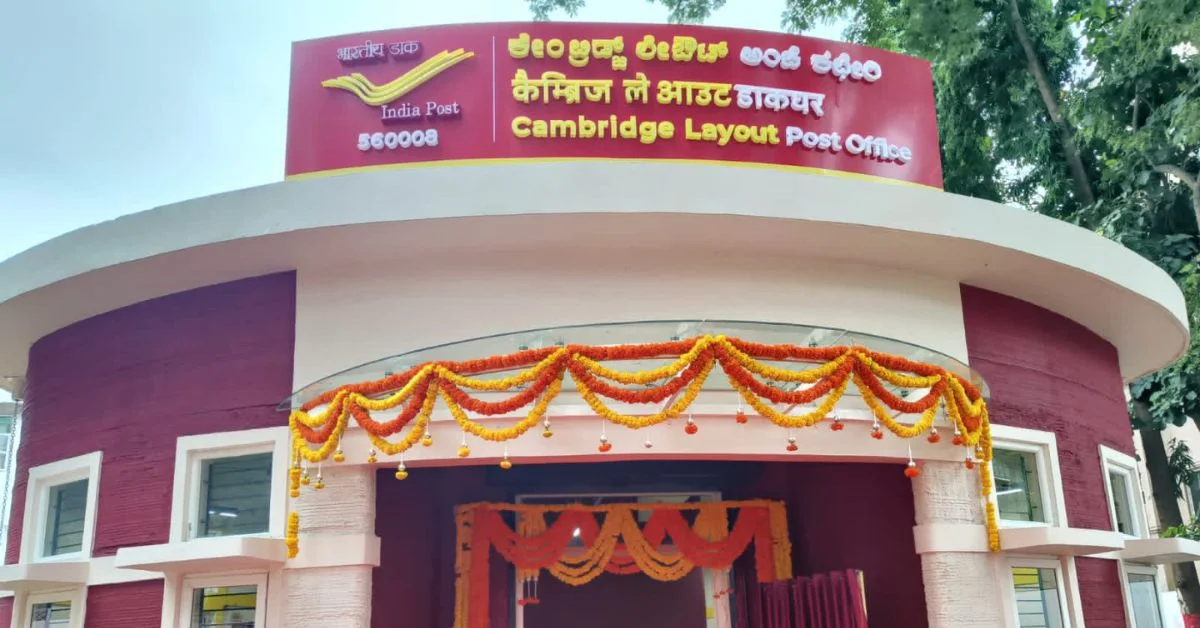
A groundbreaking achievement in modern construction was celebrated as Union Minister for Railways, Communications, Electronics, and IT Ashwini Vaishnaw officially unveiled India's first 3D-printed post office in Bengaluru's Cambridge Layout on August 18, 2023.
The high-tech post office, an emblem of innovation and progress, was virtually inaugurated by the Union Minister from the iconic General Post Office building.
Demonstrating India's cutting-edge capabilities, the 3D-printed post office's completion ahead of schedule—43 days, to be exact—marked an impressive feat.
The construction was carried out by Larsen & Toubro Limited in collaboration with IIT Madras, which provided crucial technological support under the guidance of Professor Manu Santhanam from the Building Technology and Construction Management Division of the Department of Civil Engineering.
"Bengaluru always presents a new picture of India. The new picture that you saw today in terms of this 3D-printed post office building is the spirit of India today. That's the spirit with which our country is progressing today," The Indian Express reported quoting Minister Vaishnaw commented.
Spanning an area of 1,021 square feet, the post office's creation utilised cutting-edge 3D concrete printing technology.
ALSO READ | IIT-Guwahati Designs Bamboo Furniture For Health Centres
This automated building construction process involves a robotic printer meticulously depositing layers of concrete according to the pre-approved design.
Using a special-grade concrete, known for its rapid hardening properties, ensures robust bonding between layers, thus forming the structure. George Abraham, the head of operations (south and east) at L&T, highlighted the pivotal role of robotics in achieving the project's swift completion.
The construction incurred Rs 23 lakh, which marked a significant cost reduction of 30–40% compared to conventional construction methods.
Professor Santhanam emphasised the importance of 3D printing in concrete and its potential scaling in the future.
"The project primarily involves machines and robots that are indigenous but need to be scaled up in the coming days. The special concrete material used for this project provides pumpability, extrudability, buildability, and mechanical properties," he said.
IIT Madras and L&T engaged in a series of strategic meetings in the lead-up to construction.
Professor Ravindra Gettu from IIT-M played a crucial role in evaluating the comparability of 3D-printed technology against conventional approaches.
He also meticulously reviewed L&T's comprehensive techno-commercial proposal.
The project boasted the absence of vertical joints, with a continuous perimeter achieved through seamless 3D printing.
The technology's flexibility, adapted from Denmark for this endeavour, allowed the incorporation of curved surfaces and site-specific dimensions, liberating the design from conventional constraints. Continuously reinforced concrete footing and triple-layer walls were achieved, with the outer layers printed with concrete and the core reinforced with concrete.
The streamlined approach culminated in an impressive 43-day construction timeline, minimising material waste.
The remarkable aspect of 3D printing lies in its capacity for customised structures, which holds promise for the housing sector.
Weatherproofing and utility integration within the walls further enhance the efficiency of the construction process.
"Primarily, we are looking at building post offices with low-cost construction options using 3D printing technology. We feel this is the technology for the future that may trigger interest in low-cost housing, which is our secondary interest," said Rajendra Kumar, Chief Postmaster General of Karnataka Circle, revealing broader ambitions.
This 3D-Printed Post Office is a historic achievement. This not only revolutionises the concept of construction but also paves the way for future developments in housing, promising quality structures even in challenging terrain.
The Story Mug is a Guwahati-based Blogzine. Here, we believe in doing stories beyond the normal.